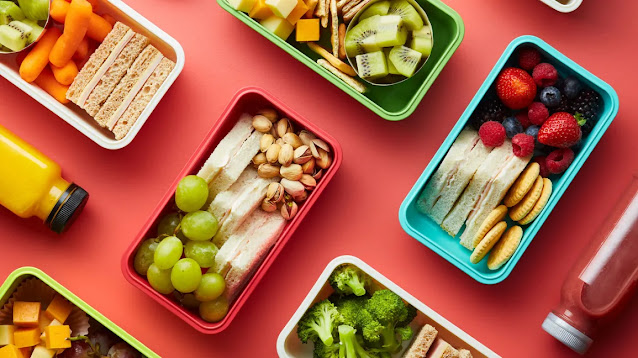Article Source: Tasha J. Collard
Losing belly fat in one month requires a combination of a balanced diet and regular exercise. While it's important to consult a healthcare professional or registered dietitian for a personalized plan, I can provide you with some general guidelines for a diet plan to help you lose belly fat. Remember, sustainable and healthy weight loss typically occurs at a rate of 1-2 pounds (0.5-1 kg) per week.
Here's a sample diet plan:
Calorie deficit: To lose weight, you need to create a calorie deficit by consuming fewer calories than you burn. Aim for a moderate deficit of 500-1000 calories per day to lose 1-2 pounds (0.5-1 kg) per week.
Balanced macronutrients: Include all three macronutrients in your meals to promote satiety, provide energy, and support overall health. Aim for the following distribution:
Protein: Consume lean sources of protein such as chicken breast, turkey, fish, tofu, beans, and lentils. Aim for 25-30% of your daily calorie intake.
Carbohydrates: Focus on complex carbohydrates like whole grains, fruits, vegetables, and legumes. Limit refined grains and added sugars. Aim for 45-55% of your daily calorie intake.
Healthy fats: Include sources like avocados, nuts, seeds, olive oil, and fatty fish for essential fatty acids. Aim for 20-30% of your daily calorie intake.
Portion control: Be mindful of your portion sizes to avoid overeating. Use measuring cups, a food scale, or visual cues to help you control portion sizes.
Hydration: Stay hydrated by drinking plenty of water throughout the day. Water helps regulate metabolism and can aid in weight loss. Aim for at least 8 cups (64 ounces) of water per day.
Breakfast: Include protein-rich foods like eggs, Greek yogurt, or a protein smoothie. Add some fruits and whole grains like oats or whole wheat bread.
Snack: Opt for a handful of nuts, a piece of fruit, or raw vegetables with hummus.
Lunch: Have a lean protein source (chicken, fish, tofu) with a generous portion of vegetables and a small serving of complex carbohydrates like brown rice or quinoa.
Snack: Choose a low-fat yogurt, a small protein bar, or a handful of berries.
Dinner: Focus on lean proteins (fish, turkey, legumes) with a variety of vegetables and a side of complex carbohydrates.
Evening snack (optional): If needed, choose a light and healthy snack such as a small portion of cottage cheese, a few almonds, or a piece of fruit.
Reduce processed foods and added sugars: Minimize your intake of processed and packaged foods, as they are often high in unhealthy fats, added sugars, and empty calories. Opt for whole, unprocessed foods whenever possible.
Regular physical activity: Combine your diet plan with regular exercise. Engage in a mix of cardiovascular exercises (such as brisk walking, jogging, or cycling) and strength training (like weightlifting or bodyweight exercises) to help burn calories and build lean muscle.
Remember, consistency and long-term lifestyle changes are key to achieving and maintaining a healthy weight. Adjust the plan according to your individual needs and preferences, and consult a healthcare professional for personalized guidance.
Diets Tips for Diabetics, Benefits-Of-Surya-Namaskar, Vegan-Protein Sources , Reduce Weight Naturally , Aerobic Workout for Flat Tummy, What is Whey-Protein The 5 Most Common Training Mistakes for Runners








0 comments:
Post a Comment